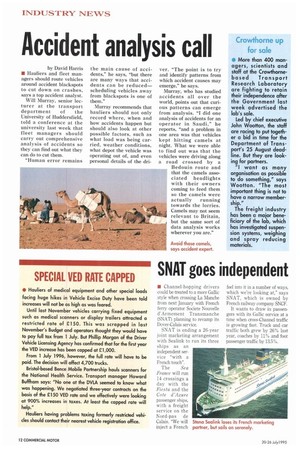Accident analysis call
Page 14

If you've noticed an error in this article please click here to report it so we can fix it.
by David Harris • Hauliers and fleet managers should route vehicles around accident blackspots to cut down on crashes, says a top accident analyst.
Will Murray, senior lecturer at the transport department of the University of Huddersfield, told a conference at the university last week that fleet managers should carry out comprehensive analysis of accidents so they can find out what they can do to cut them.
"Human error remains the main cause of accidents," he says, "but there are many ways that accidents can be reduced— scheduling vehicles away from blackspots is one of them."
Murray recommends that hauliers should not only record where, when and how accidents happen but should also look at other possible factors, such as what load was being carried, weather conditions, what depot the vehicle was operating out of, and even personal details of the dri ver. "The point is to try and identify patterns from which accident causes may emerge," he says.
Murray, who has studied accidents all over the world, points out that curious patterns can emerge from analysis. "I did one analysis of accidents for an operator in Saudi," he reports, "and a problem in one area was that vehicles kept hitting camels at night. What we were able to find out was that the vehicles were driving along a road crossed by a Bedouin route and that the camels associated headlights with their owners coming to feed them so the camels were actually running towards the lorries. Camels may not seem relevant to Britain, but the same sort of data analysis works wherever you are."




























































































